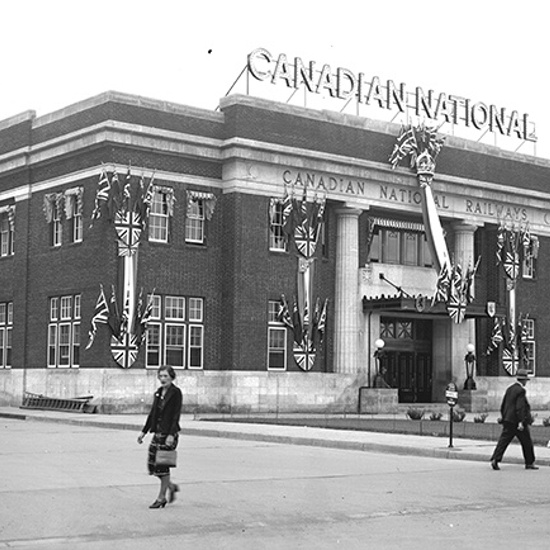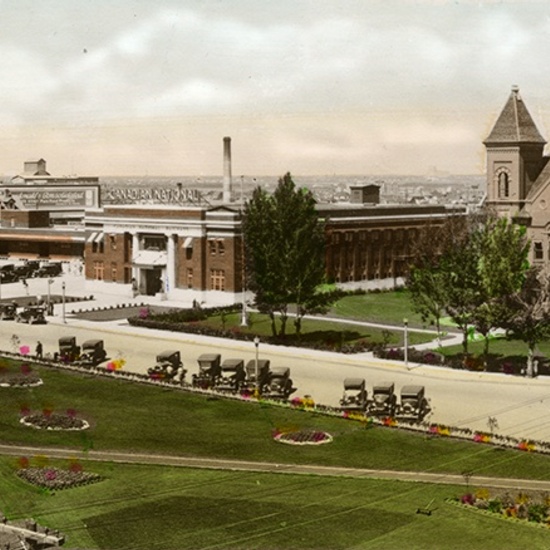Canadian National Railway Station-1928
C.N.R. architect John Schofield situated this prominent railway station to be admired from Jasper Avenue, four blocks away.
C.N.R. architect John Schofield situated this prominent railway station to be admired from Jasper Avenue, four blocks away.
Designed in a Grecian Doric style with heavy stone columns, plinth, and entablature, the Canadian National Railway (C.N.R.) station was constructed with concrete beams and girders, tile partitions, red corduroy brick, and Tyndall stone from Manitoba. The main part of the building featured a central two-storey high waiting room lit with skylights, a dining room, 40-person restaurant, smoking room, ladies’ waiting room, and white oak benches. The upper level contained divisional offices around the perimeter. The floor was finished with two-foot terrazzo tiles laid alternately with light and dark marble chips; quarter-cut oak and fir millwork accented the interior. A coal-fed power plant 200 feet away heated the building, while natural gas heated the water supply throughout. The entire site was 159 feet by 439 feet (48.5 metres by 134 metres) with the main building encompassing 15,000 square feet (1390 square metres). A one-storey west wing featured a milk and cream dispatching area.
Schofield oriented this grand building at the north end of 100 Street, in the centre of 104 Avenue, and directly opposite the Hotel Macdonald – the other C.N.R. landmark in Edmonton. He designed the structure so that extensions could be made as demand grew, and placed it end-on to the track, as opposed to the usual parallel position, to allow as much space as possible along the tracks for baggage and express. Passengers reached their trains from the station through a tunnel beneath the tracks.
This new station was a replacement building for the old, 1905 Prairie-style station one block west, and it opened to great fanfare on St. Patrick’s Day, 1928 with thousands of people cramming into the rotunda for an evening dance. Alberta produced more railway tonnage per capita than any other province at the time, and there was much reason to celebrate. By 1951 renovations created a third storey to the main building, a two-storey east wing with a basement constructed for office space, and new terminal sheds of concrete, steel, and brick. This impressive building was demolished to make way for the CN Tower, completed in 1966.
Details
Type
Commercial
Designation Status
Demolished
Neighbourhood
Time Period
Year Built
1928
Architects
Architectural Styles
Character Defining Elements
Rectangular footprint , Two storeys , Reinforced concrete structure , Brick cladding , Flat roof , Balconette , Giant columns , Plinth , Entablature , String course



